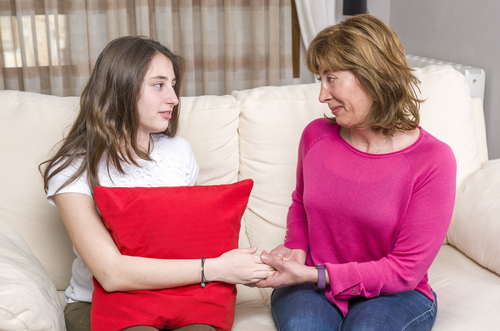Moderate-to-severe pelvic pain accompanied by nausea, as well as bowel and urinary irregularities, are common symptom patterns shared by adult and adolescent women with endometriosis.
This was reported in a study titled “Spectrum Of Symptoms In Women Diagnosed With Endometriosis During Adolescence Versus Adulthood,” which was conducted by researchers from Boston Center for Endometriosis at Boston Children’s Hospital and Brigham and Women’s Hospital. The study was published at the American Journal of Obstetrics & Gynecology.
Endometriosis is a chronic inflammatory disease that affects about 6-10 percent of women at reproductive age.
Definitively diagnosing endometriosis is still a challenge that can take several years and it is possible only upon surgical confirmation. In many cases, women have to undergo several consultations with physicians, non-gynecologists and gynecologists, as well as several clinical evaluations, before a diagnosis is achieved.
As for many other diseases, early detection of endometriosis symptoms is critical. Diagnosis and treatment delays can lead to central sensitization and worse pain symptoms, but also can promote endometrium tissue scaring and infertility.
Early symptoms commonly present during adolescence may contribute to diagnosis delays. Young women often “lack experience and influence to advocate for their own diagnosis and treatments,” the researchers said. However, it is yet unclear if the initial manifestations of the disease are in any way different for those experienced by older women.
To address this matter, researchers evaluated the symptoms of 402 women with diagnosed endometriosis and compared the results with those experienced by 268 healthy women. Endometriosis patients were divided into two groups according to their age at the time of surgical diagnosis confirmation as adolescents (from 12 to 18 years old) or adults (from 19 to 49 years). A total of 295 women were included in the adolescents group.
All participants were recruited from November 2012 to March 2016 from two tertiary care centers and the surrounding communities.
Adolescent participants had onset of symptoms on average at 13 years old, had their first clinical appointment because of pain at 14, and received a diagnosis when they were 16. The adult group reported having their first symptoms on average at age 16, with the first consultation at 20, and surgical diagnosis at 22.
Researchers found that delays in diagnosing patients who had symptoms onset during adulthood were almost three times longer than those seen in adolescents. Also, these women had to visit more clinicians before surgical diagnosis.
About 93 percent of the participants reported that they experienced moderate-to-severe pain during menses over their lifetime, which usually required medication or even bed rest. No significant differences in pain symptoms were reported between the two groups.
For both groups of women, pelvic pain was reported to interfere with their professional and social lives.
Nausea was found to be a common complaint, with 70 percent of adolescents and 51 percent of adults reporting it as a concomitant symptom to pelvic pain. In addition, 57 percent of adult patients were found to be more likely to report frequent urination when experiencing menstrual pain, compared with 32 percent of the adolescent patients.
“Contrary to our original hypothesis, pain patterns were similar between females diagnosed with endometriosis during adolescence compared to adulthood,” the researchers stated.
“Symptom patterns may change over time due to changes in the type of endometriosis lesions found at laparoscopy that differ between adolescents and adults, or due to the increased prevalence of deep infiltrating endometriosis as women age,” they wrote.
The researchers believe that improved recognition of nausea and gastroenterological symptoms accompanying pelvic pain as endometriosis features may help reduce diagnosis delays.
“Pediatricians and gynecologists should be aware of these important and common symptoms to avoid unnecessary diagnostic delays, and include endometriosis in the differential diagnosis for both teens and adults experiencing such pain” they said.

